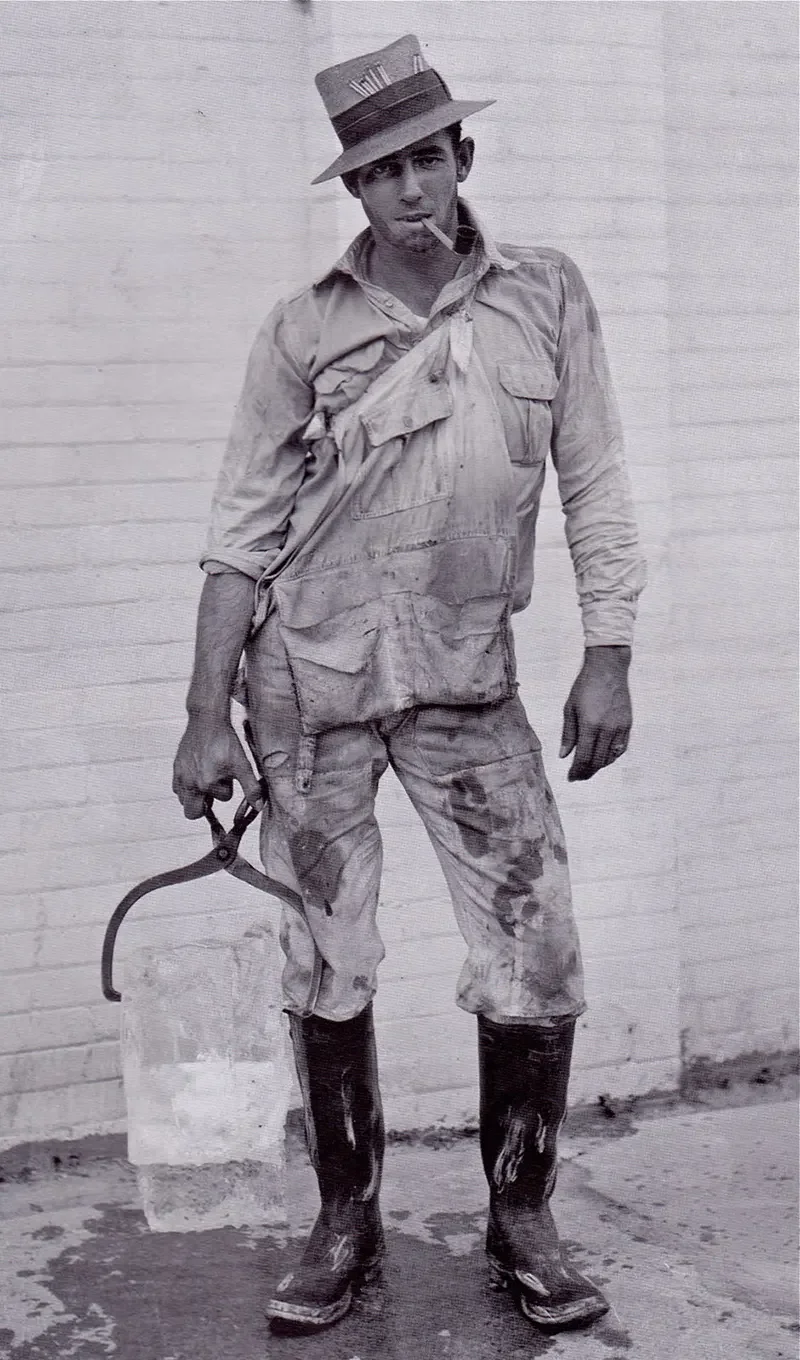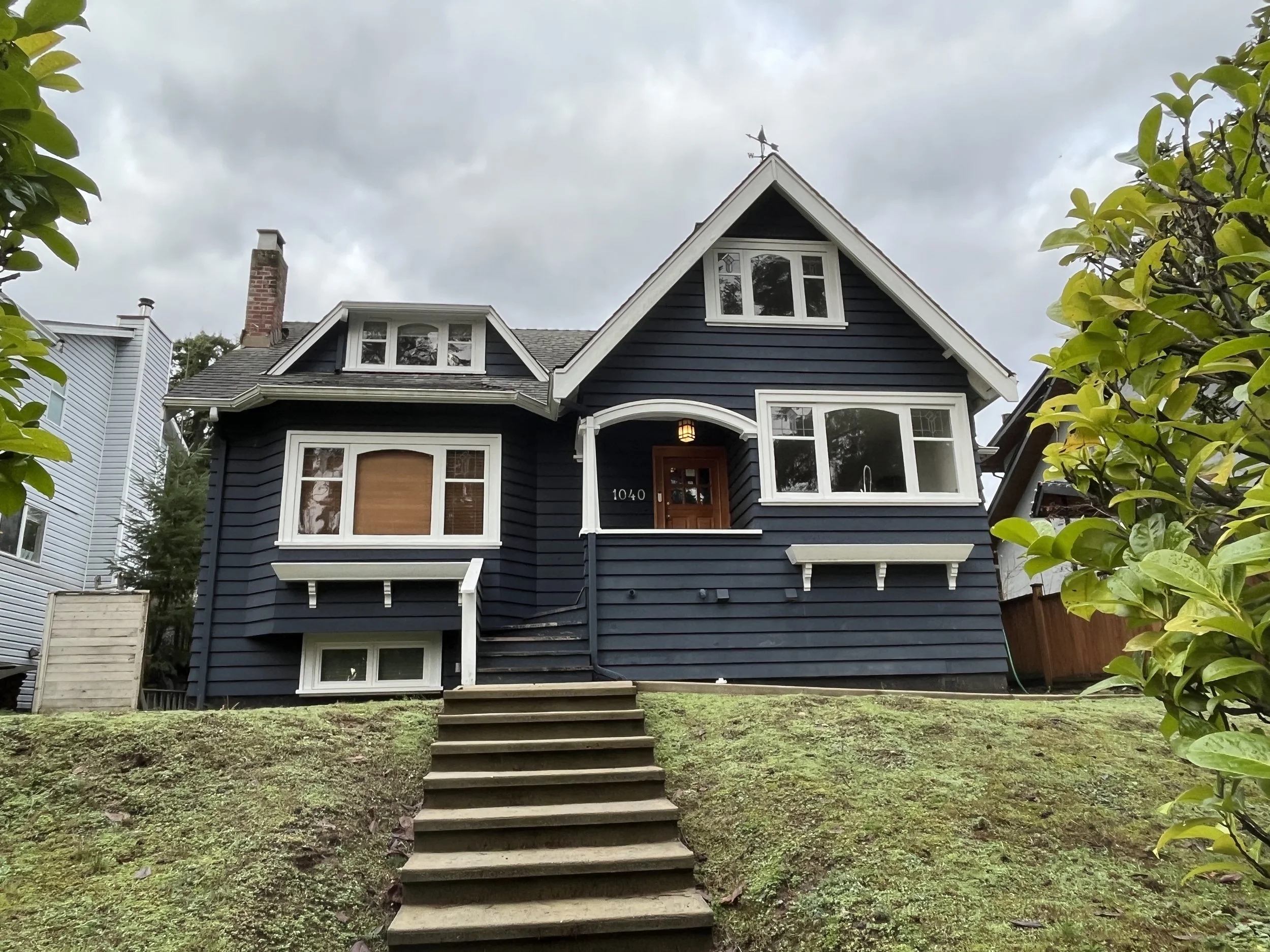The hot days of Summer are with us and, no doubt, you’re reaching for a chilled beer or cold glass of milk from the fridge to cool the effects of the heat. Spare a thought then for our predecessors back in the day. The early pioneers of the North Shore had no easily available fridges to chill their much-needed drinks or keep even the most basic of foodstuffs fresh. Instead, they had to use their wits, making use of what nature could afford.
Hence, the arrival of the ‘Ice Man’.
An Ice Man, delivering a 25lb block of ice in 1928. Courtesy, Story Sloane Collection.
Ice harvested in the Winter from frozen lakes and rivers was stored in ice houses, structures insulated with straw to maintain the integrity of the ice. It was a practice dating back centuries. The blocks of ice, which could be preserved for months were delivered by horse and cart.
Ice Delivery Wagon and Horse. Courtesy, MONOVA Archives Inv 12294.
And then, as time progressed, by van.
Ice Truck with Archie Storey ca 1940. Courtesy, MONOVA Archives Inv 1960.
One company that took advantage of this lucrative business was Storey North Shore Ice & Fuel. Formed by Archie Storey, who had arrived from England in 1920, the business was located at 1040 West Keith Road, North Vancouver. Initially a transfer truck operation, the family business later expanded into oil, coal and ice delivery. They also rented and sold ice boxes and ice machines.
During war time, it was Women that often replaced the Ice Men.
Young Women delivering ice in 1918. Courtesy, Story Sloane Collection.
Delivery wagons followed predetermined routes, delivering ice to households, hotels, and other businesses with schedules often dictated by the natural melting rate of the ice. The Ice Men and Women had to work quickly, handling heavy blocks with large tongs or hooks to grip and maneuver them. Often, the ice needed to be chipped or sawed down into smaller pieces to fit the requirements of the customer.
Another method of cooling used in the early days required more significant planning! As Thomas Diplock recalls in his memoir, “The North Shore as I knew it from 1897”
“It was not until Mr WL Keene completed his house that we realized his forethought in building over the stream. Refrigeration was unknown at that time [late 1890s]. The usual method of preserving foodstuffs was a screening over an outdoor cupboard on the shady side of the house. Mr Keene cut a hole in the kitchen floor fitted with a trapdoor and putting his perishables such as milk, butter etc in a pail he lowered it into the stream where it kept wonderfully cool in the running water.”
So, the next time you reach for a cool drink from the fridge to quench your thirst, spare a thought for the ingenuity required of our forebears in dealing with such matters!
FUN FACTS:
The North Shore News, in conjunction with MONOVA, published a Time Traveller story about the Storey family. https://www.nsnews.com/local-news/time-traveller-ice-delivered-by-truck-on-the-north-shore-7989860
The Storey family house, featured in the North Shore News story, and pictured above with the Storey truck outside, still stands at 1040 West Keith Road in North Vancouver.
1040 West Keith Road, North Vancouver. Photo courtesy of Jennifer Clay.
Except where indicated, text and images Copyright @ North Shore Heritage and Paul Haston. All rights reserved. Republication in whole or in part is prohibited without the written consent of the copyright holder.
References:
MONOVA, North Vancouver Museum and Archives https://monova.ca/archives/
City of Vancouver Archives https://searcharchives.vancouver.ca/






